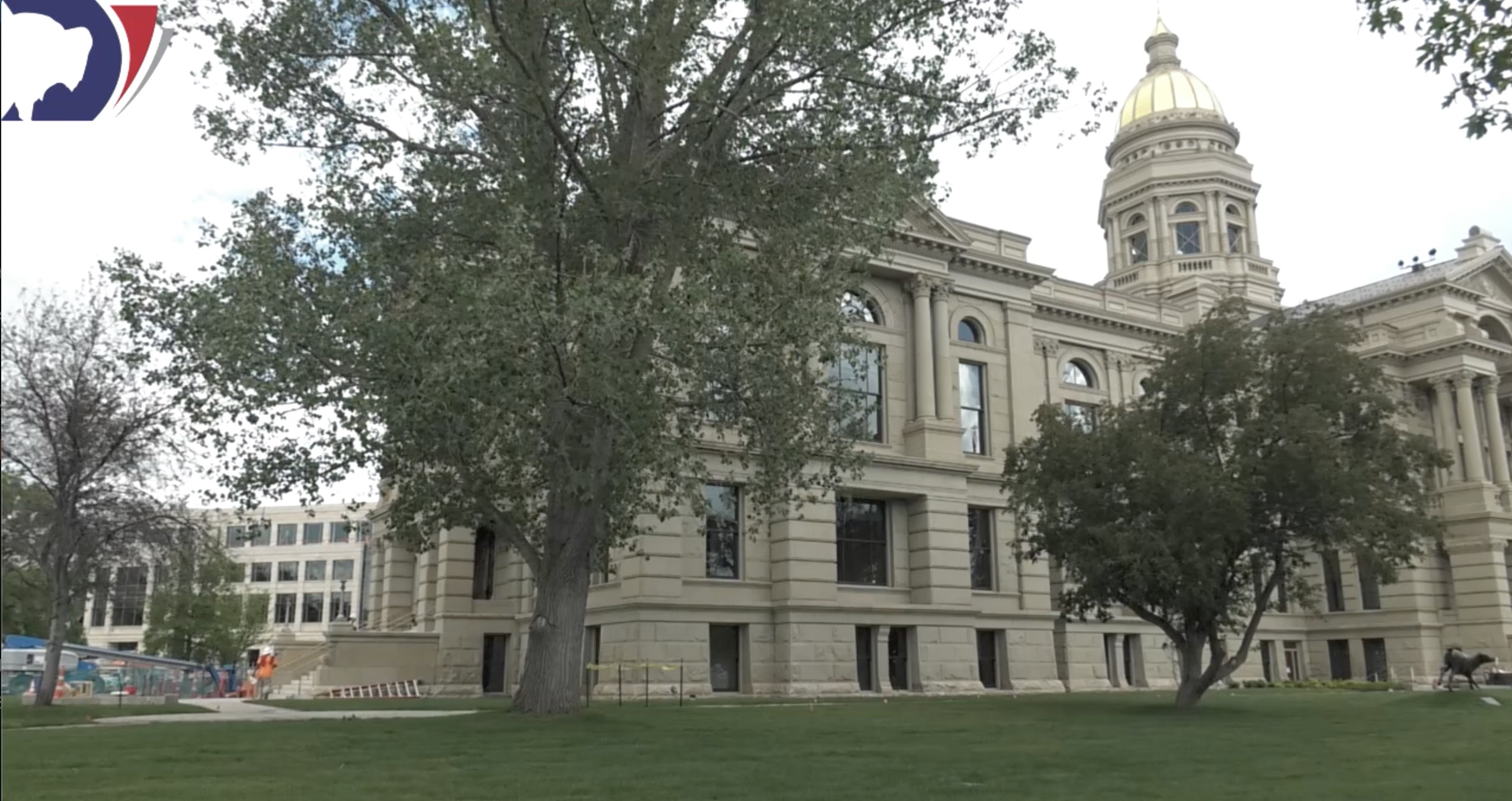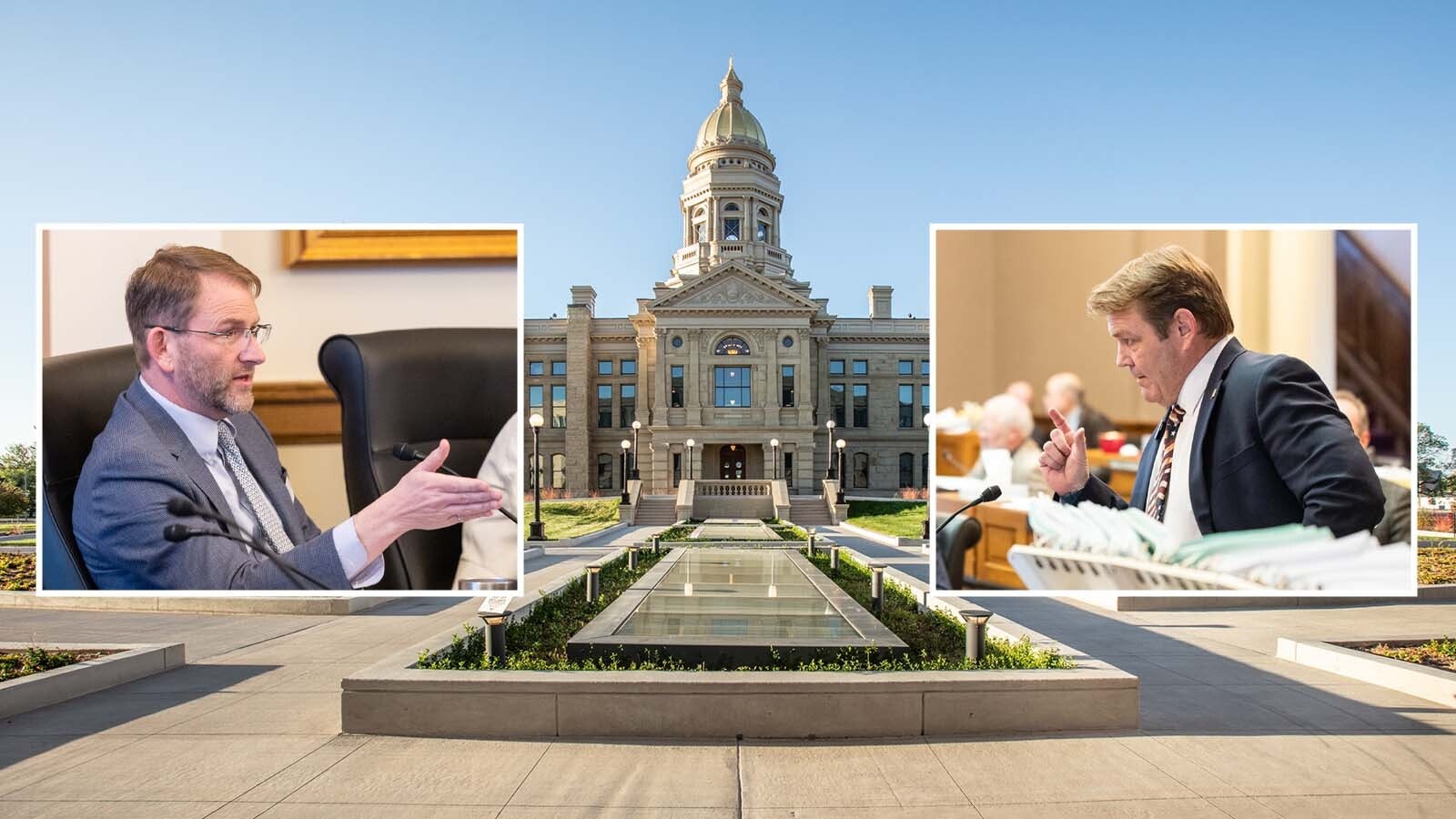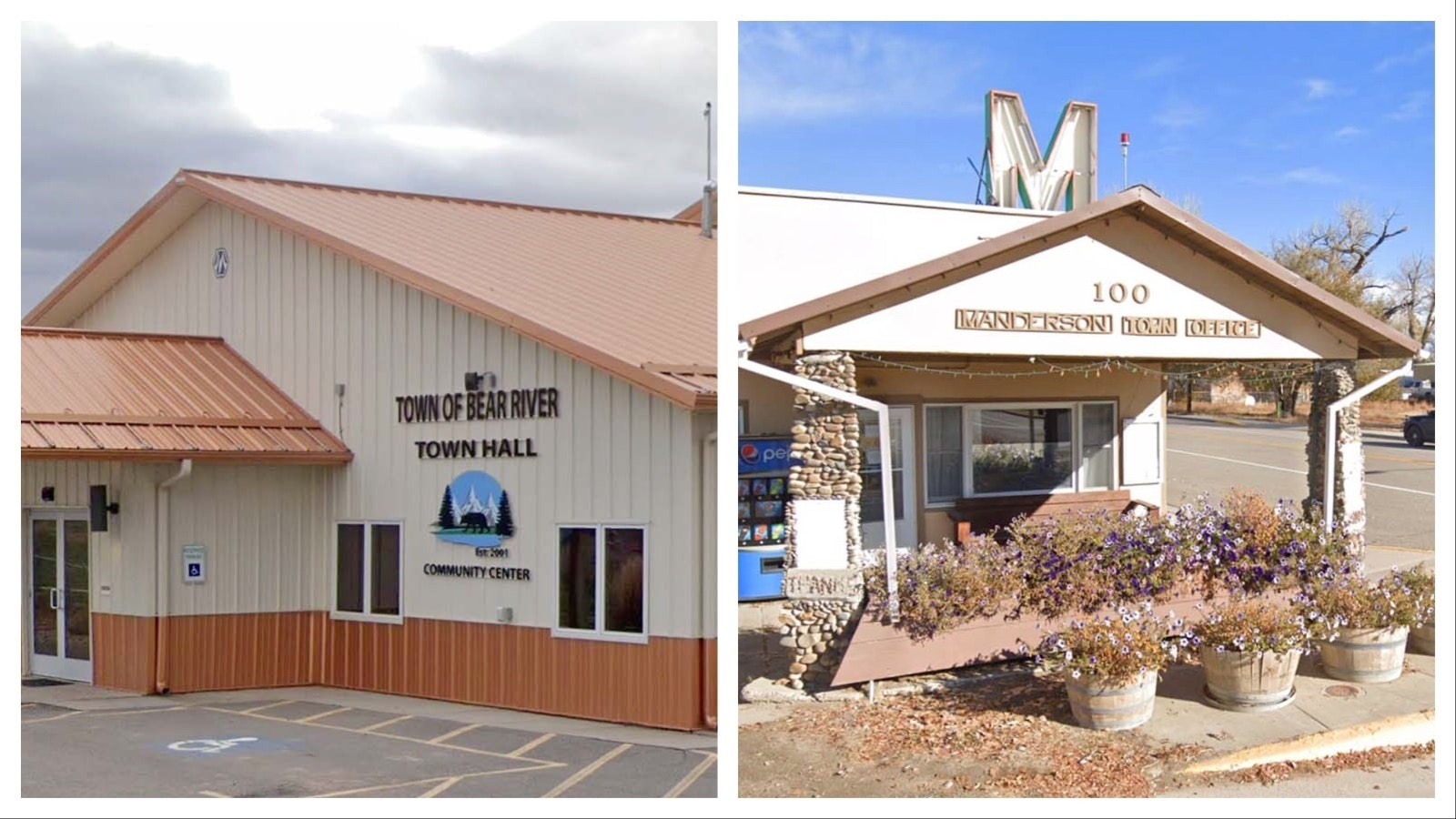After nearly two decades of setting aside funds and working on design and construction, renovations to the state Capitol and Herschler State Office Building are nearly complete, a Wyoming State Construction Department spokesperson said.
“The Legislature started saving for the Capitol Square Project in 2003,” said Suzanne Norton, the state Construction Department project manager. “The projected substantial completion date for construction is Jan. 31 (2020). Final completion is typically 90 days after the substantial completion date.”
The Construction Department provided Cowboy State Daily with documents summarizing the cost of the Capitol Square Project as of Dec. 1, 2019.
The square project is an extensive overhaul of the Capitol and Herschler buildings. A new central utility plant was also built to service both.
While numerous aesthetic renovations were made to the Capitol, work also included several major infrastructure updates.
“Before the project, only about 75 percent of the Capitol had heating and cooling,” Norton explained. “We also installed a complete fire suppression system throughout the building, which it didn’t have before.”
On the Herschler side, crews peeled the building back to its bones, said Mel Muldrow, an administrator for the Construction Department’s Construction Management Division.
“The interior was all gutted out — that’s walls, flooring, electrical, everything except for concrete slabs — and replaced,” Muldrow said.
Originally estimated to cost about $305.6 million, the value of the current contracts in place for the project total $307.8 million, according to Construction Department documents.
While close to the original estimate, the value of the current contracts values does not include furniture for the Capitol, which is still in the request for proposal process and was originally estimated to cost about $4 million.
“The project should not go above that cost ($307.8 million), but we are not done,” Norton said. “There are a number categories we are still working on getting contracts for.”
The state has paid about $289 million to date, with a remaining debt of about $19 million, not including contracts still in the request for proposal process.
Where did it all go?
The Construction Department broke down the projects cost into six categories: Owner’s overhead, construction services, equipment and furnishings, temporary facilities, relocation and contingency fund.
Construction services
Estimated at $223 million, the current value of contracts for construction services is $256 million.
“Construction services includes all the work done by our construction contractors and abatement companies, among others,” Norton said. “It’s all the nuts and bolts, plus some.”
Accurately guessing construction costs and materials prices years ahead of time can be challenging, which is why the Legislature built a $20 million contingency fund into the project cost, Muldrow said.
Basic construction costs were estimated at $219 million, but contracts for the work are valued at $250 million, an increase of about $31 million or 15 percent.
A new parking lot that was slated to cost about $600,000 was never built, Norton said.
However, the abatement estimate was about $550,000, but wound up costing triple at $1.5 million.
“Abatement is the removal of usually hazardous materials, such as lead and asbestos,” Muldrow said. “You can only guess at where you’ll find those materials. One example is when we took the exterior walls off the Herschler building, we discovered they were put up with hockey-puck sized chunks of glue material, which tested positive for asbestos.”
Contingency fund
Construction Department documents state $20 million was set aside for the contingency fund, all of which was spent.
“One of the things you always want to have in a project is some extra money for all the little things that come up that you didn’t expect,” Muldrow said.
Norton said contingency monies were dispersed to nearly every area of the project throughout the process.
Temporary facilities
During the approximately three years of renovations, about 750 state employees were moved out of their offices in the Capitol and Herschler buildings and into offsite state buildings or space leased from private companies around Cheyenne.
The state estimated the cost of temporary facilities for those workers would be about $14.7 million, but the actual cost will be $15.2 million, Construction Department documents state.
The leases were originally estimated to cost about $7.6 million, but are currently valued at $9.1 million. In December, a Construction Department spokesperson said all relocated state employees were moved back into state-owned properties.
State improvements to the temporary facilities were estimated to cost about $4.8 million, and the contracts’ value is currently $4.1 million.
“When you move a government office out of the Capitol, and you want to hold a legislative session in an old retail store, it’s not an apples-to-apples fit,” Norton explained. “Some changes will need to be made to the new property.”
Not everyone was pleased with the tenants’ improvements, however. Wyoming Financial Building owner Wayne Voss sued the state in 2017 for failure to pay almost $1.5 million in rent. State officials argued they were withholding rent because the state had to make improvements to the building, but Voss said the state never sought his permission to make those improvements as required in the contract.
Owner’s overhead
Before hammers can pound nails, pens need to scratch paper and the owner’s overhead category of the Construction Department’s cost summary is an accounting of all the time and ink spent to facilitate the project’s construction efforts, Norton explained.
“There’s research you have to do, permit fees, legal advertising, design costs and a host of other non-construction costs,” she said.
Estimated to cost about $7.3 million, the owner’s overhead category received funds under the “miscellaneous” line item recommended by the Capitol Square Project Oversight Group, which eliminated the contract value cost and created a credit of about $94,000.
The funds were ultimately reallocated within the project budget to be spent on actual construction items such as abatement, concrete repair, roof repair and replacement and fire suppression piping that were not originally included in the project scope, Norton said.
Design services is included in the overhead category, but separate from the overhead items in the red.
Estimated at about $30 million, design services included the architect costs and materials testing, which are currently valued at $31.5 million.
Equipment and furnishings
“Furniture, fixtures and equipment are generally defined by design and construction industries as anything that would fall out if you picked up a building and shook it,” Norton said.
Estimated to cost about $8.3 million, the current contracts’ value is $4.1 million. Norton said $3.7 million was spent on furniture for the Herschler building, but no contract has been signed for Capitol office furniture, so the cost of that furniture is not included in the contracts’ value.
Artwork for the two buildings was estimated to cost $100,000, and to date, about $336,000 has been spent on artwork, the department’s documents state.
Relocation
The estimated cost to move people, furniture and technology to and from the Capitol and Herschler buildings was about $1.9 million, and the current contracts’ value is about $1.2 million.





